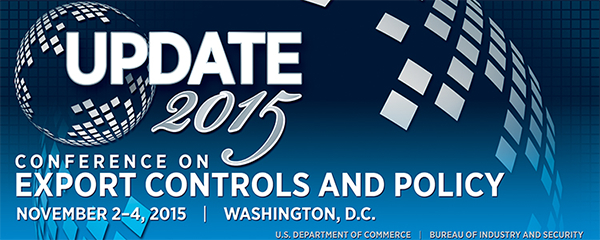![By Daderot (Own work) [CC0], via Wikimedia Commons http://commons.wikimedia.org/wiki/File%3APatent_quote_-_United_States_Department_of_Commerce_-_DSC05103.JPG By Daderot (Own work) [CC0], via Wikimedia Commons http://commons.wikimedia.org/wiki/File%3APatent_quote_-_United_States_Department_of_Commerce_-_DSC05103.JPG](https://www.exportlawblog.com/images/Commerce_Building.jpg) In a laudable effort to increase transparency of its operations and processes, the Bureau of Industry and Security (“BIS”) has launched an initiative to release statistics and data on at least part of its operations. The new “data portal” can be found here. And although it’s clearly a work in progress, there are still some interesting factoids that can be gleaned from the “2014 Statistical Analysis of BIS Licensing” that appears there.
In a laudable effort to increase transparency of its operations and processes, the Bureau of Industry and Security (“BIS”) has launched an initiative to release statistics and data on at least part of its operations. The new “data portal” can be found here. And although it’s clearly a work in progress, there are still some interesting factoids that can be gleaned from the “2014 Statistical Analysis of BIS Licensing” that appears there.
First, export control reform did not create a licensepocalypse. Many ill-mannered cynics (though not me, in this case) speculated that the onslaught of license applications for new 600 series items transferred from the USML would overwhelm BIS staff and result in a license tar pit from which fossilized approvals would emerge centuries, if not eons, later. The new figures however show a steady decrease in licensing times. Since 2010 average license processing times have decreased from 31 to 23 days even though the number of applications processed each year has increased from approximately 22,000 to 31,000. And, not surprisingly, the largest category of applications processed by BIS was the 600-series ECCN 9A610, which covers military aircraft and commodities.
Second, BIS grants the overwhelming majority of licenses that it processes. Of the approximately 31,000 applications processed in 2014, only 321 were denied with the remainder being returned without action or approved. The top items that were denied were, in this order, rifle scopes, encryption software, and EAR99 items. Although I understand rifle scopes and EAR99 items (for which licenses are required only when exported to bad people or for bad uses) being on this list, I am a bit baffled as to why licenses for 5D002 software receives so many denials. It’s not like there’s any real reason to control encryption software given that the U.S. (despite some self-delusions in this regard) does not have a monopoly on secure encryption technology.
Finally, I have just one little wish for the data portal. It would be tremendous if BIS would provide similar data on classification requests, particularly processing times. The classification process is just as important as, and in some instances even more important than, the licensing process. And I suspect that the processing time figures do not look quite as rosy as they do for licensing.

 Posted by
Posted by  Category:
Category: 

![XBS Epoxy System Demo via http://www.spacephotonics.com/Coating_Glob-top_Cavity_Fill_X-Ray_Blocking_Anti-Tamper_Material.php [Fair Use] XBS Epoxy System Demo via http://www.spacephotonics.com/Coating_Glob-top_Cavity_Fill_X-Ray_Blocking_Anti-Tamper_Material.php [Fair Use]](https://www.exportlawblog.com/images/xbs.jpg)
![PPI via https://m.facebook.com/ProductionProducts/photos/pb.207851795988965.-2207520000.1438832505./368040763303400/?type=1&source=54 [Fair Use] PPI via https://m.facebook.com/ProductionProducts/photos/pb.207851795988965.-2207520000.1438832505./368040763303400/?type=1&source=54 [Fair Use]](https://www.exportlawblog.com/images/ppi.jpg)

![140515-D-VO565-003 by Chief of Joint Chiefs of Staff via Flickr https://flic.kr/p/nkMLsf [Public Domain - Work of U.S. Government] 140515-D-VO565-003 by Chief of Joint Chiefs of Staff via Flickr https://flic.kr/p/nkMLsf [Public Domain - Work of U.S. Government]](https://www.exportlawblog.com/images/china_us_flags.jpg)


